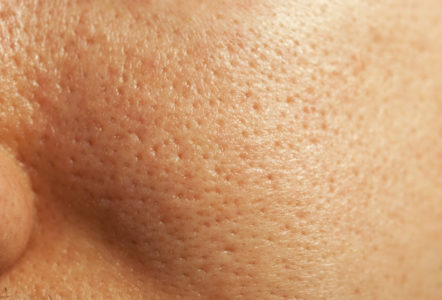Hyperpigmentation occurs when excess melanin causes a darkened appearance to the skin, this can be in a small or a large area. Pigmentation is the natural colour of a person’s skin and is related to melanin production. Melanin actually protects the skins cells and their DNA by absorbing the sun’s ultraviolet rays.
There are different types of hyperpigmentation the most common being Freckles, these are triggered by the suns rays (UVR), they are common in children with fair skin, and they can fade in the winter.
Solar Lentigines more commonly known as Age Spots usually appear in your 50’s, these appear larger than freckles and are caused by years of UVR exposure.
Hormone related pigmentation usually called Melasma or Chloasma, can be caused by changes in hormones so has been related to oral contraception and HRT, the menopause and pregnancy can be triggers. It can appear symmetrically on the face, often being present in the epidermis and the dermal layers of the skin. Because of this it can be very difficult to treat. You can not cure Melasma, it will always need to be maintained.
Lastly we have Post Inflammatory Hyperpigmentation (PIH), this is where inflammation has stimulated our Langerhan cells; this alters the melanocyte activity causing increased pigment production. It can be found on the skin which has been subjected to inflammation due to trauma, irritation or acne. For skins that are prone to PIH, especially some darker skin types, it is important not to pick or squeeze spots, pull any flaking skin after chemical peels or cause any trauma to the skin. This is why as therapists we have to pre treat any potential PIH skins before commencing in clinic treatments, to help to calm melanocyte activity and further prevent the risk of any PIH.
So we have said that pigmentation can be hard to treat, as this pigment has built up over a period of time in different layers of the skin so to expect it to disappear after a few months is not realistic.
What can you do to help the Hyperpigmentation?
Above anything else you need to be using a good quality Broad Spectrum SPF every single day. Just one day of not using SPF can undo 9 months of work in clinic to help the condition. You should be applying your SPF regularly especially during the warmer months ahead, to ensure maximum protection is in place. This will stop the inflammation process from the UVR rays stimulating the Langerhan cells and ultimately the melanocyte cells.
Use antioxidants to give protection to your cells and prevent free radical damage; L-Ascorbic Acid at the clinical dose will help to protect your cells and brighten the skin. It surpresses melanin synthesis in melanocytes, it reduces the amount of pre existing melanin and promotes collagen synthesis by the fibroblasts. So it can also help with ageing in the skin as well as reducing melanin.
Other ingredients that are specifically designed to help break pigment down or stop the melanocyte transfer are;
White Shitake Mushroom – this lightens existing hyperpigmentation by degrading melanin
B-White – this liposome encapsulated peptide inhibits the action on the MITF cellular pathway which is involved in melanin production
Kojic Acid – this inhibits the action of Tyrosinase, another important part of the melanin pathway. It has the ability to lighten the skin, fading existing spots and discolourations. It is also a powerful; antioxidant and an anti inflammatory.
Arbutin – this inhibits Tyrosinase, blocks melanin production and is a natural skin lightener
Punica Granatum – this pomegranate extract reduces the release of MITF, it reduces the transfer of melanosomes from melanocytes to keratinocytes and it is also an antioxidant
Licorice Root Extract – another antioxidant that inhibits Tyrosinase
Symwhite 377 – a further ingredients to inhibit Tyrosinase and provide protection from free radical damage in the form of an antioxidant
Retinoids are also useful when treating pigmentation as it inhibits the enzyme Tyrosinase. It will also turn the cells over in the skin helping to remove the pigmentation as it moves to the surface.
Niacinamide is an effective skin lightening compound that inhibits melanosome transfer. It interferes with the interaction between keratinocytes and melanocytes, thereby inhibiting melanogenisis. It also disrupts the action of Tyrosinase which is required for the production of melanin. Niacinamide helps prevent melanin production stimulating the production of keratin.
Hormones can play a part in pigmentation production. Elevated levels of Estrogen and a lesser extent progesterone levels are associated with increased pigmentation. These flux of hormones are often seen in pregnancy, those using HRT or the contraceptive pill. The elevated Estrogen stimulates melanocytes indirectly and directly to increase pigmentation production.
During times of stress our bodies increase cortisol levels, this increase stimulates Estrogen which then as we said increases melanin production. So your stress levels can affect your pigmentation, therefore a complete approach to looking at your wellbeing and mindfulness can help to improve and manage stress levels.
You can also look at diet to help treat pigmentation, an anti-inflammatory diet rich in antioxidants and phytonutrients would be beneficial. Increase your intake of healthy fats, omega 3 fatty acids, berries, green tea and vegetables such as broccoli, mushrooms and grapes.
Limit foods with high Estrogen content; consider eliminating dried fruit, chickpeas, tofu and soy.
Potential Triggers:
- UV exposure
- Genetics
- Age
- Gender
- Hormones ( pregnancy, thyroid dysfunction)
- Medication
If the potential trigger isn’t identified, it can make it difficult to treat, as if you have a thyroid issue, then you cannot reduce the pigmentation easily.
To summarise firstly protection and prevention of the Hyperpigmentaion getting worse is your good quality broad spectrum SPF every day, this is non negotiable.
Secondly use the ingredients listed to help to prevent melanin production, melanin transfer and to help to break down the existing melanin. This is an ongoing process, you can’t stop, you will always have to treat it.
If this does not help to start reducing the pigmentation you may have to look at using a medical laser to help alongside the topicals and protection.
For specific product recommendations then feel free to contact us to see how we can help.




